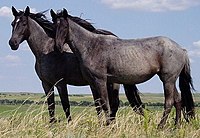
Photo from wikipedia
Background and Objectives The Internet provides easy access to multiple types of gambling and has led to changes in betting habits. A severe rise in problematic gambling has been predicted… Click to show full abstract
Background and Objectives The Internet provides easy access to multiple types of gambling and has led to changes in betting habits. A severe rise in problematic gambling has been predicted among all sectors of the population, and studies are required to assess the emerging phenotypes related to the new structures of gambling activities. This study aimed to explore the existence of latent classes associated with gambling habits among treatment-seeking gamblers due to Online Sports Betting (OSB). Method Initial sample included n = 4,516 patients consecutively admitted for treatment in a hospital unit specialized in behavioral addictions. Two-step clustering analysis was used within the subsample of n = 323 patients who reported problems related with OSB, within a set of indicators including sociodemographics, psychopathological distress, personality, and severity of the gambling activity. Results The prevalence of OSB as a main type of gambling problem in the study was 7.2% (95% confidence interval: 6.4 to 7.9%). Two latent clusters were identified, with differences in sociodemographics and clinical status. Cluster 1 (n = 247, 76.5%) grouped patients that were more affected due to the OSB behaviors, and it was characterized by non-married patients, lower socioeconomic position index, higher comorbidity with other substance related addictions, younger age, and early onset of the gambling activity, as well as higher debts due to the OSB, higher psychopathological distress, and a more dysfunctional personality profile. Cluster 2 (n = 76, 23.5%) grouped patients that were less affected by OSB, mostly married (or living with a stable partner), with higher social position levels, older age and older onset of the gambling activity, as well as a more functional psychopathological and personality profile. Conclusion The increasing understanding of latent classes underlying OSB phenotypes is essential in guiding the development of reliable screening tools to identify individuals highly vulnerable to addictive behaviors among Internet gamblers, as well as in planning prevention and treatment initiatives focused on the precise profiles of these patients.
Journal Title: Frontiers in Psychiatry
Year Published: 2020
Link to full text (if available)
Share on Social Media: Sign Up to like & get
recommendations!